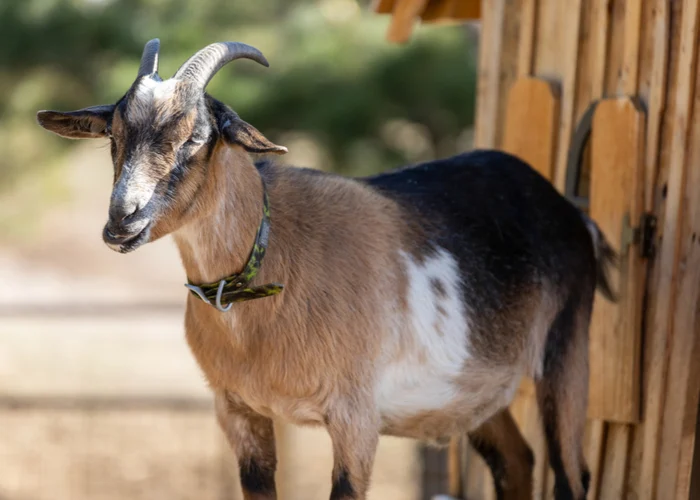
Description:
An American breed of goat is known as the myotonic goat or Tennessee fainting goat. The physique is bulky and has substantial muscle. Long and shaggy to short and smooth, and some people’s hair even grows thick cashmere in the winter. Some goats have a concave to straight facial profile with a protruding forehead and eyes.
Behavior:
Owners frequently admire fainting goats’ personalities. These tiny animals have a tendency to be highly attentive and loving towards their humans. Although they occasionally cause trouble, they are not as obviously stubborn as some breeds. They make excellent playmates for kids because they are so simple to manage. A child would also find it simple to participate in extracurricular farm-related activities like 4H projects.
The fainting goat is what most people would call incredibly humorous, interesting, and charismatic. They typically get along nicely with other farm animals and people.
Benefits/Uses:
The main purpose of the Mytonic breed is to increase the muscularity of commercial cattle. Any meat goat that was at least 50% myotonic produced 6% to 10% more usable meat.
Origin/History:
The majority of myotonic goats appear to have originated in Tennessee in the 1880s. These goats were reportedly spotted in Tennessee’s Marshall, Giles, Lawrence, Maury, and Coffee counties, according to White and Plaskett. Goats from Tennessee’s Giles County were also sent to Texas in order for a farmer who claimed to be aware of the goats to demonstrate to his neighbours that he was telling the truth.
The goats discovered openings in the ground to crawl below the gates, much like a hog, because they couldn’t jump over normal-sized fences. In this time, many farmers used stone walls as fences to contain their goats, therefore this unusual behavior made the goats more desirable. Also carried over from Canada was a buck goat that was in Marshall territory. During the years 1926–1927, The A&M College in Texas maintained a zoo where a myotonic goat was on display. Dr. White said in a letter to the author that he saw many fainting goats in Egypt in the summer of 1929 between the Suez Canal and the Palestine border. Additionally, he claimed to have sent some of the goats from Tennessee to Professor Nagel at the Nerve Disease Center in Germany for research.
The myotonic goat played a significant historical role in the investigation and clarification of the function of chloride in muscle activation. First documented in 1904 in the scientific literature, the fainting was later referred to as “congenital myotonia” in 1939. Many years after the corresponding gene’s discovery in humans and mice, the mutation in the goat gene that causes this muscular stiffness was found in 1996. Yet, the Hippocratic Corpus makes comparisons between the phenomenon and human illness based on the goats’ propensity for spasm.
Keeping as Pet:

Habitat, Living Conditions & Setup
- Enclosure
The livelihood and energy of fainting goats will require a lot of space for them to kick their legs. Keeping a goat confined in a tiny space is unhealthy since it prevents them from getting the necessary activity. A good rule of thumb is to provide each goat at least 30 square feet.
- Fencing
You’ve probably heard the myths about goats’ ability to climb and jump. Some people are expert escapologists. A predator-proof fence is also necessary to keep out potential threats. To keep them within and uninvited people outside, your fencing must have at least a 4-inch gap.
- Bedding
Absorbent, dry bedding is best for goats who are weak. You can select the option that appeals to you the most from a variety of options. Generally, straw, sawdust, and pine shavings are the most popular options.
- Shelter
You don’t need to have anything extravagant in terms of shelter. But you must make sure that your goat is shielded from bad weather, strong winds, and freezing temperatures. Make sure the shelter you choose has enough space to accommodate all of your goats.
Table





